How to Look After Your Climbers
Climbing plants are wonderful for adding height and colour to your garden and there is a climber suited to every growing condition. Learn how to look after them in this how to guide.
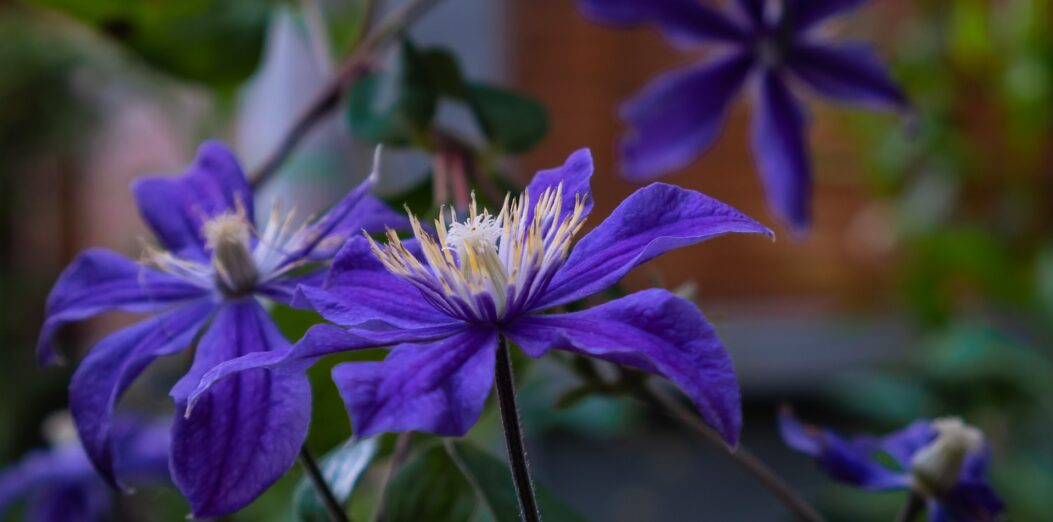
Climbers can be a brilliant addition to any planting scheme, no matter the style or size of your garden. These varied plants add instant vertical colour and can draw the eye to the edges of the garden or towards a structure. There is a climber suited to every growing condition and they are generally very easy to care for with just a few basic considerations. (Read more here about planting for pergolas.)
Climbers can grow up a structure or surface by either twining stems, tendrils or stem roots. Wall shrubs, such as Ceanothus and Cotoneastor, are often mistaken for climbers, but they need training and tying in against a structure as well as regular pruning. Many climbers, such as Roses or Wisteria, have a woody framework from which new growth develops. Other climbers, such as some Clematis, die back in winter and re-grow in spring. There are both perennial and annual climbers both with their own benefits.
Choosing the Right Plant
To ensure your climber thrives and grows and flowers well, it’s important to choose a climber suited to the place in your garden:
- What size of area do you want you climber to cover? An entire fence or a small archway? Some climbers are much more vigorous than others.
- How much light and water does the area get? Climbers will vary as to how much they need to thrive.
- How much maintenance are you willing to carry out each year? Some climbers need very little maintenance, others need regular pruning.
Popular Climbers and How to Care For Them
Roses
Roses are very versatile plants and climbing roses are a great way of adding long lasting colour and a classic look to your space (read more here about where to use roses).
- Position roses in moist but well-drained soil in full sun to partial shade, depending on the variety.
- Tie stems into a loose framework to maximise their flowering potential and cover.
- In autumn, clear up fallen leaves to prevent the spread of fungal infections such as rust and blackspot, then mulch the soil with well-rotted manure, leaf mould or compost.
- Prune annually in late winter/early spring back to the main framework and tie in new growth as it appears.
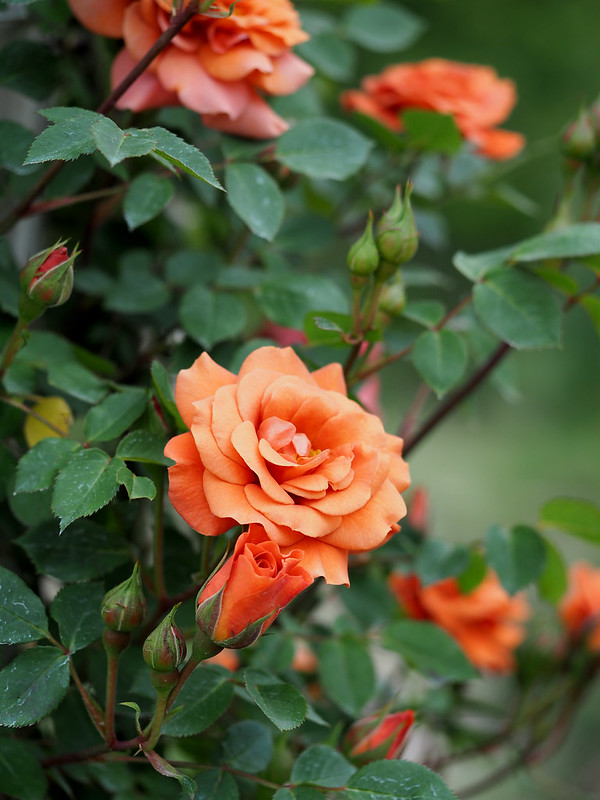
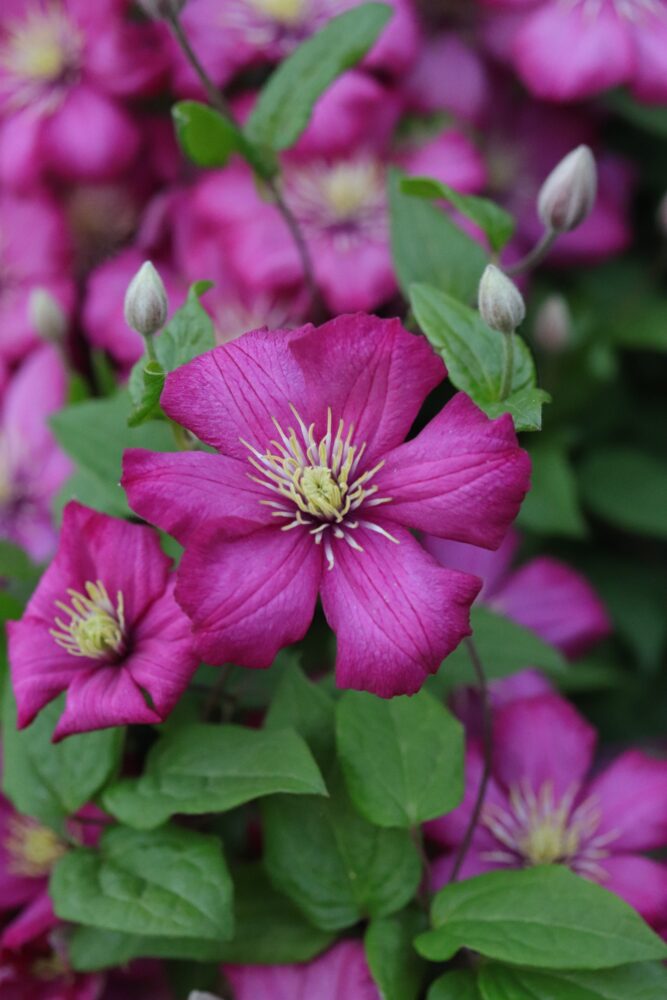
Clematis
Clematis are another versatile and popular climber. They will scramble over a range of structures; and with a wide range of colours and flower shapes to choose from, there is a clematis for every taste.
- Clematis fall into three groups, and this will dictate how to care for them.
- Group 1 are early flowering clematis and bloom in winter and spring on the previous year’s growth. This group doesn’t need pruning, but you can remove old or damaged stems after they have finished flowering, if needs be.
- Group 2 are the large-flowering hybrids, producing blooms in spring and summer on the previous year’s growth. Prune in early spring for the best display and if pruned after the first flush, they can flower again in late summer.
- Group 3 are the late-flowering group, producing flowers on the current season’s growth, which makes pruning more important. To ensure a great display of flowers in summer and autumn, cut them down to a couple of feet from the ground every February or March.
Honeysuckle
Honeysuckle is a self-clinging, twining climber which is great for quickly covering unsightly structures, such as the sides of a building.
They work best in a natural setting as they can have an ‘untidy’ habit, but the bee friendly blooms and scent are why I love this climber.
They are also very tough, happily growing in sun or partial shade and need little care except for pruning once a year after flowering.
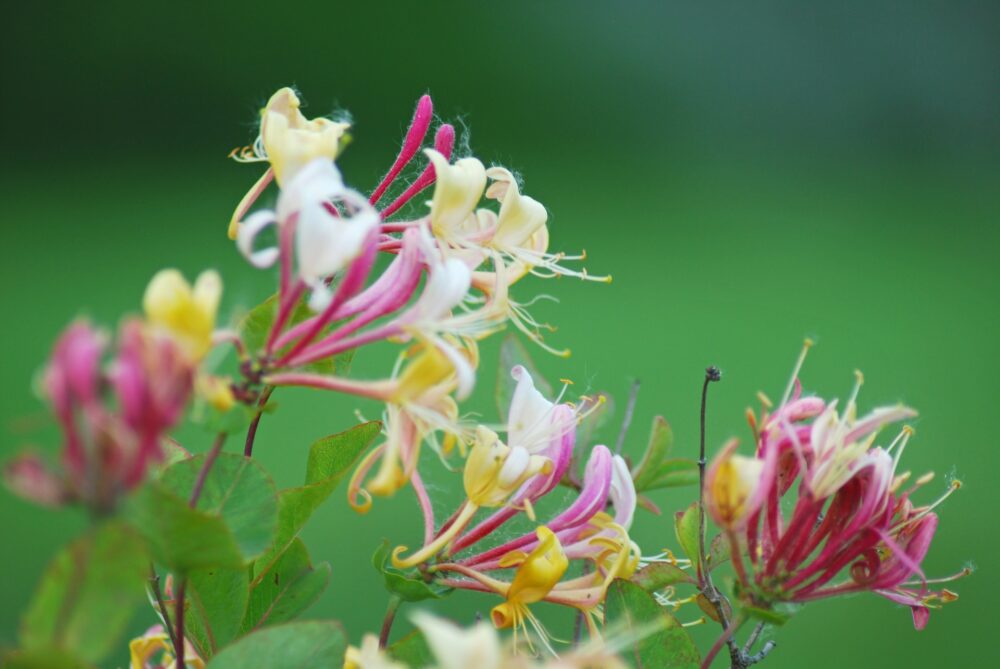
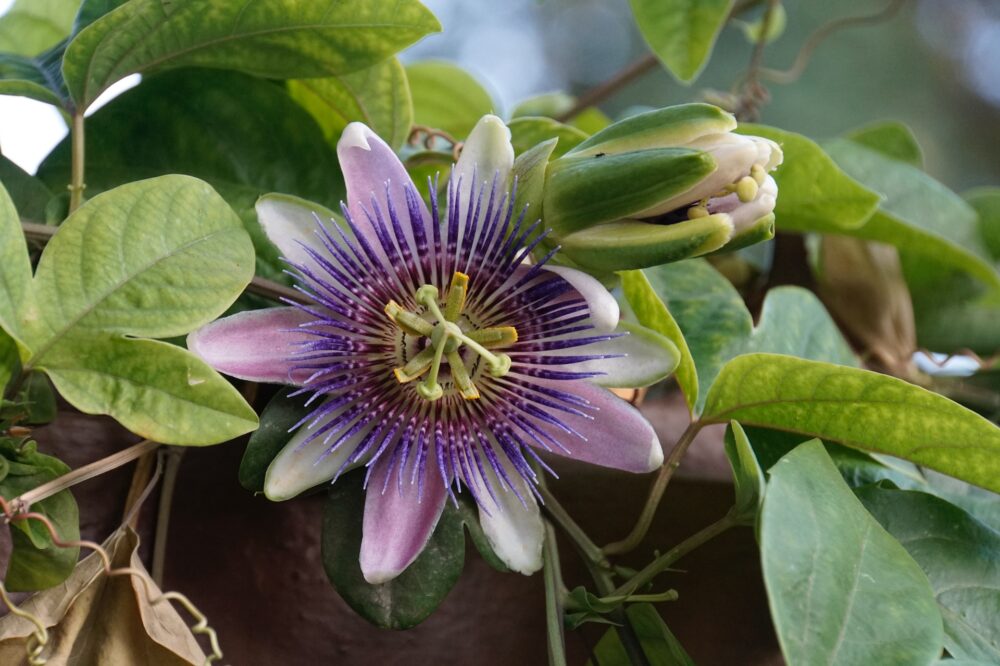
Passion Flower
This exotic looking climber looks great in a contemporary setting with its unusual looking flowers.
Best grown in a sheltered spot in full sun, it needs little care, except for a prune to shape it in late winter/early spring before the new growth starts.
Star Jasmine
This popular climber is best known for its wonderfully fragrant flowers for a long period through summer and into autumn which, coupled with handsome evergreen foliage and moderately fast growth, make it a great addition against a wall or over a pergola.
Grow in full sun or part shade, sheltered from winds, although may not be suitable for very cold areas.
Little maintenance is required, except some thinning of damaged or congested stems in spring.
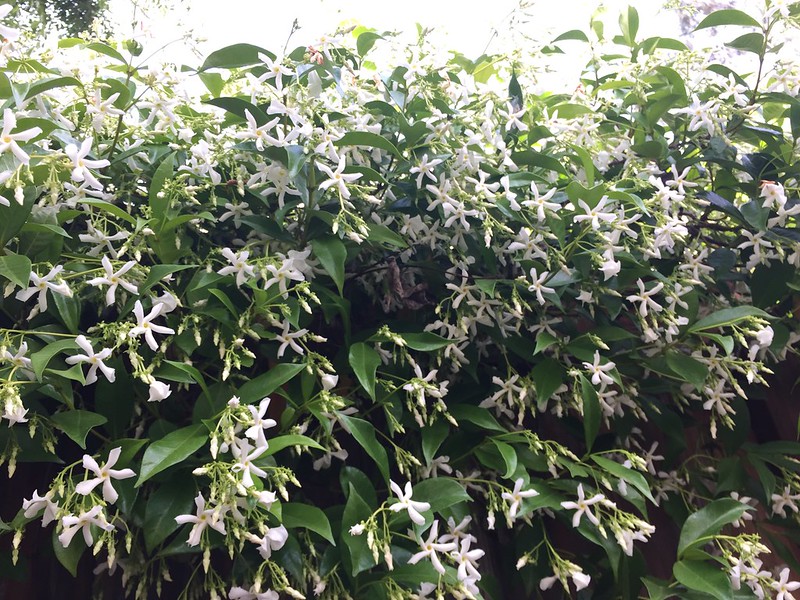
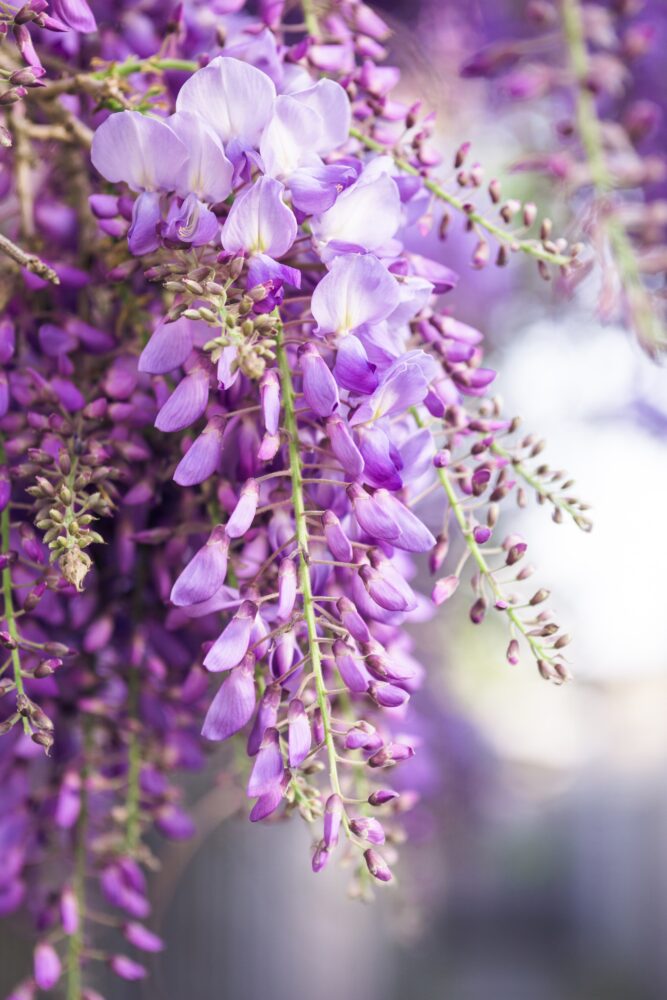
Wisteria
There are few climbers as spectacular as a flowering Wisteria and this plant can be a real focal point within a garden.
However, these woody deciduous climbers can get very big! So allow lots of space and a sturdy support such as a garden wall or the side of a house.
They are relatively high maintenance – needing twice-yearly pruning, once in February and again in August to keep them well behaved and flowering profusely.
Sweetpeas
If you are looking for fragrance, nothing beats the scent of sweet peas in summer!
As an annual climber, sweet peas are very easy to grow from seed, sown indoors or in a greenhouse in autumn or spring and then planted out in mid spring either into pots or straight in the ground.
To encourage lots of healthy new blooms from June onwards, regularly feed and water the plants with tomato feed once the buds appear and regularly pick the flowers – they make a lovely scented display in a vase.
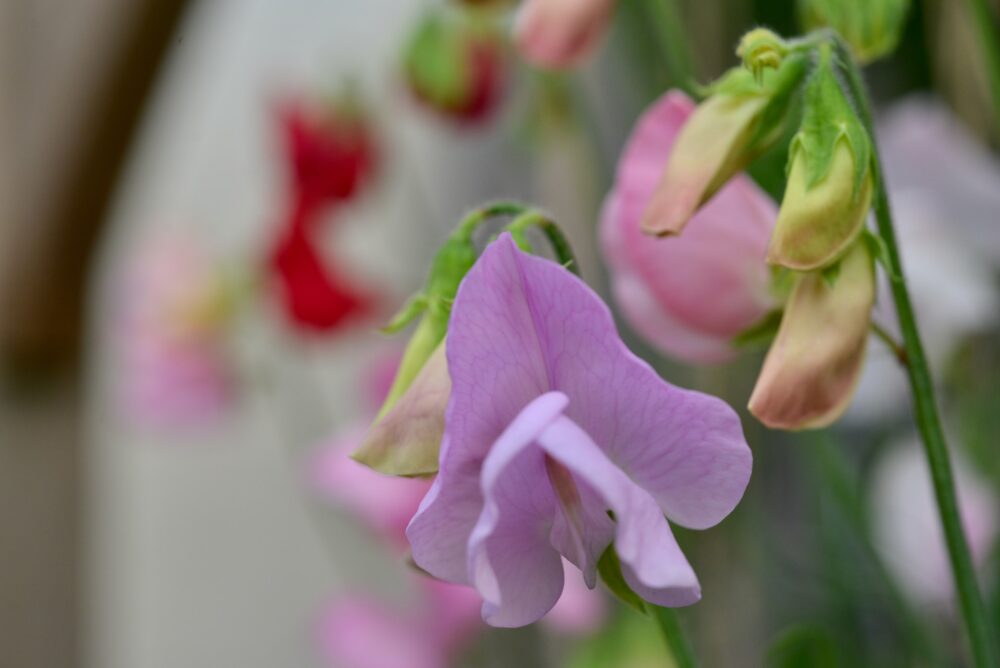
I hope these tips on how to look after climbers will give you confidence to grow and look after these wonderful plants in your garden and to ensure healthy growth and beautiful flowering year after year. If you’re interested in discussing more ideas for climbers in your garden we’d love to meet and discuss your project in detail – book your free no-obligation garden consultation today.
Photo Credits